Well, my friends, here we go. I thought all of this would be a pretty simple process. The learning curve was sharper then I expected, straight from the start. Welcome to Part 2 of TFB and LYMANS Bullet Casting for Beginners Series (you can find Part 1, the intro at https://www.thefirearmblog.com/blog/2018/08/22/bullet-casting-for-beginners/). At the end of Part 1, I list all of the equipment you should need to get started.
Lead Farming
I knew the first step from my reading was to gather scrap lead. The was surprisingly difficult. I assumed here in the southwest lead wheel weights would be in abundance, they are not. After talking to five different tire shops in town, I found that they all had exclusive contracts with recyclers and would not part with any (this was even with me literally holding cash in hand). I ended up going to a u-pull style junkyard and sorting thru a bucket. More on that later.
Confused by this I found some interesting information online. The last US lead smelter was shut down in 2013 (Read about that here). With that happening 80% of our lead usage comes from recycled lead. ( info here). This may be one factor in climbing ammunition prices. Just realize there is a significant demand for scrap lead.
These factors came to light when I was at the vehicle junkyard. I went through about 70 pounds of wheel weights and walked out of there with about 20 pounds of lead wheel weights. The rest were mostly zinc and plastic. They are pretty easy to differentiate, and there a myriad of forum posts and youtube videos to help you tell them apart. Most are labeled what they are made of. I used an old pair of wire cutters, if the metal was soft, it was lead
My second lead on lead (Like that?) was range pick up. Wish I started there. I literally picked up twenty pounds of fired lead in 30 minutes. Get a metal colander and a small shovel and go that route. Shovel the dirt into the colander, and shake out the dirt. For me, at my range, the majority of what was left was lead. When you do this, put the dirt back on the berm, don’t be “that guy”! After you recover the lead make sure you leave the area better then you found it.
Processing the scrap
At this point, I had range pick up, and wheel weights, and all of it dirty. You do not need to clean it, it all separates when you melt it down. However, any bullets that are completely jacketed and the jacket is intact you will need to pierce the jacket so the molten lead will run out of it. I used that old pair of wire snips. This is why it is best to get your lead around steel targets. The round that has hit the target inevitably is flattened thereby opening the jacket. This is where we use a cast iron pan and an old turkey fryer base.
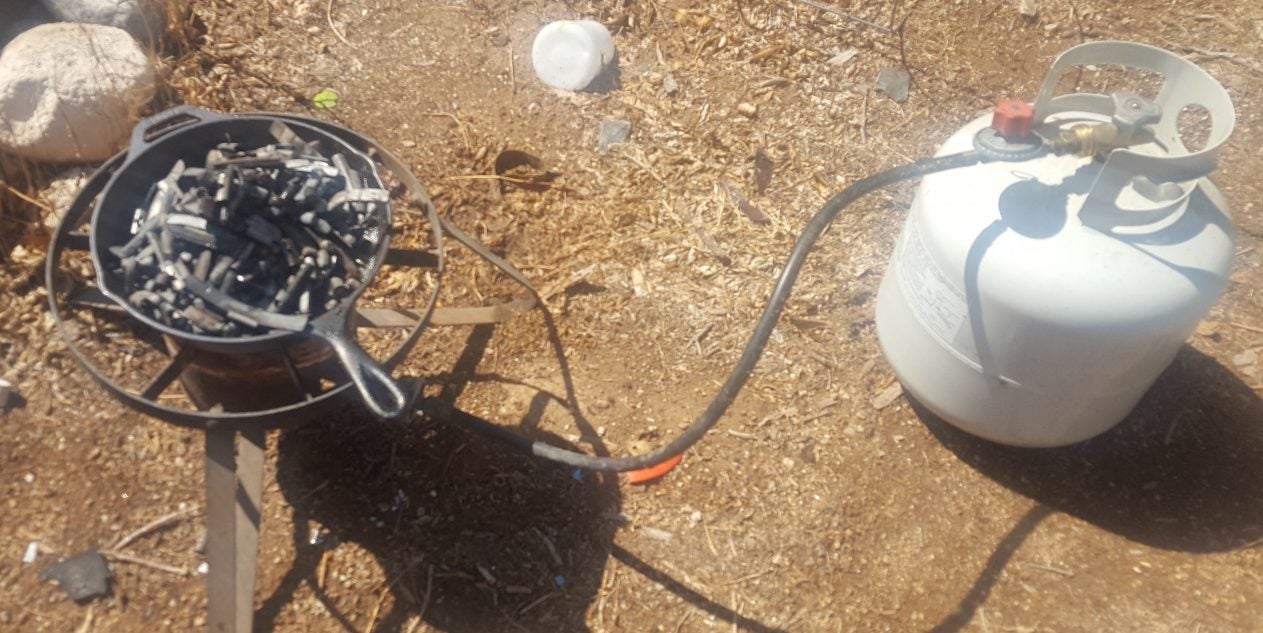
My scrap melting set up. Outside, good ventilation with room to work. (And NO rain in the forecast).
STEP 1
We fire up the burner and place the lead in the pan. Initially, we need not worry about any moisture. As it heats up moisture will dissipate out. Now is probably the absolute most important rule of this series: NEVER add moisture to molten lead. Lead melts at 635 degrees. Water, when converted to steam, can expand up to seventeen times its volume (at least that’s is what I was taught in the fire academy). Adding moisture is going to have it expand and splash molten lead everywhere. Wear an apron and eye protection, and have a means of egress and room to work.
The second rule is DO NOT breath those fumes. Do not eat lead paint, and do not breath lead fumes. Buy a respirator. The type they use for spray painting.
Okay. fire it up and give it about twenty minutes. As I start to see molten lead forming I turn down the burner a bit. Lead melts at 635 degrees, zinc melts at 787 degrees. We ideally want to keep the lead below 700 degrees in case any zinc slipped by us. The more molten lead we see the more we want to stir it a bit. we want the lead to melt and separate from any other metals. (for bullets from the copper jacket, from wheel weights from the steel pins). Before long you will not see any solid lead floating just other alloys, this is where we can start skimming.

Range pickup just added to the pan

This is the way to measuring lead temperature from 4 feet away
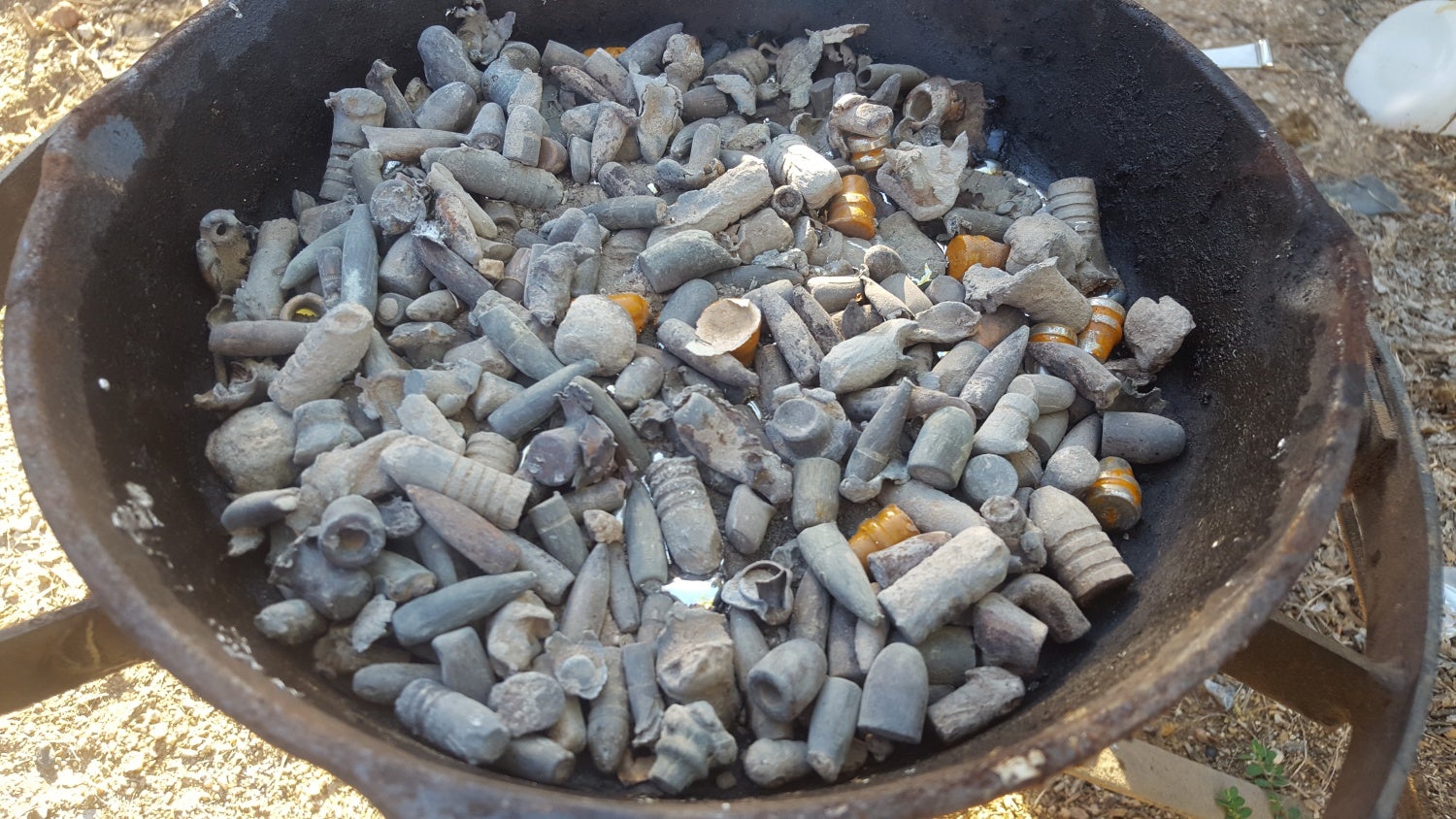
Slowly, you will start to see shiny molten lead to appear

How appropriate. You can see the “soup” forming (my term)
As all the lead becomes molten, the other metals and dirt will float to the surface. I use a metal strainer to skim and remove.
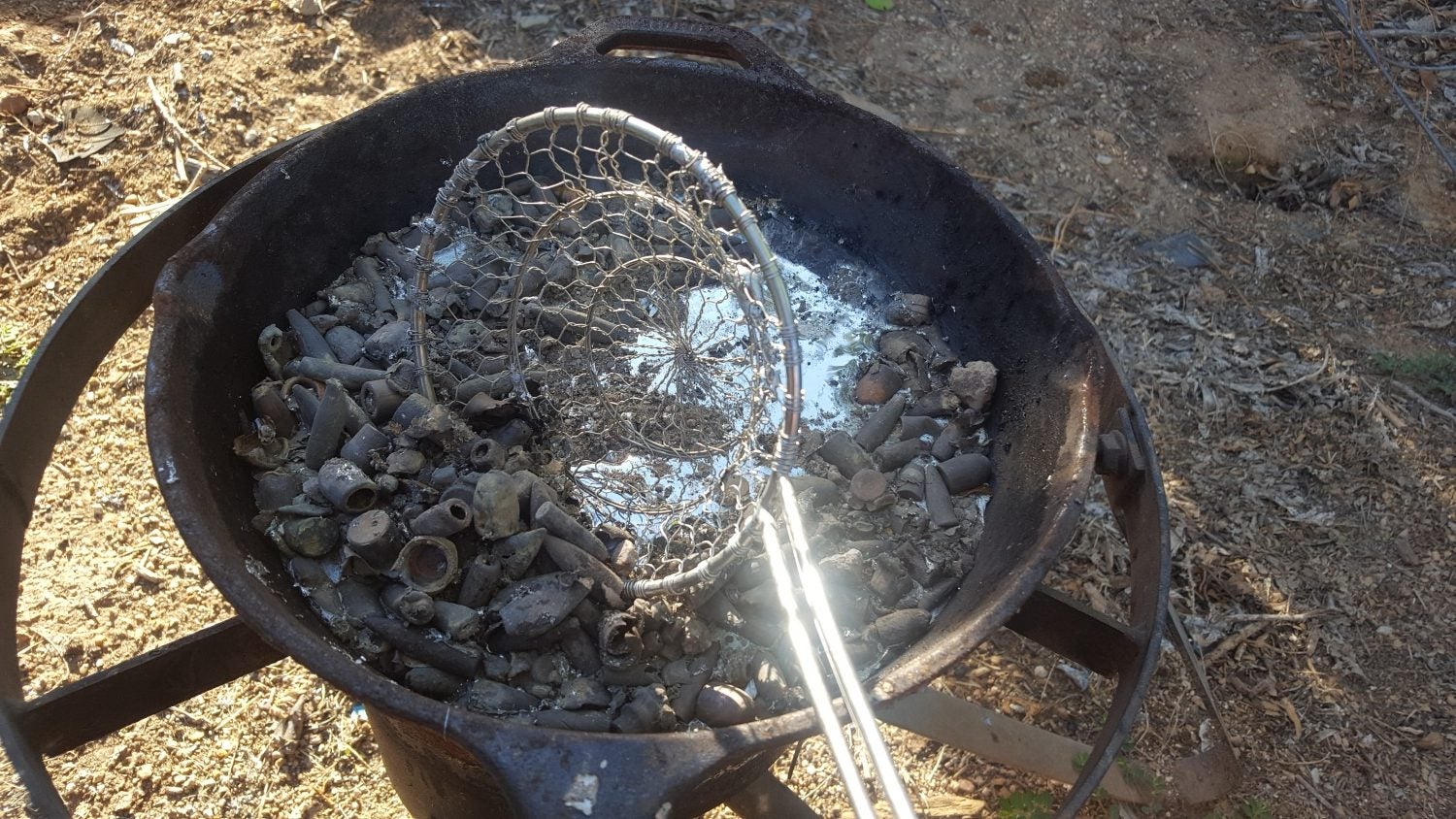
Starting to skim all the unwanted material. Remember to place any tool in the lead for a minute to heat
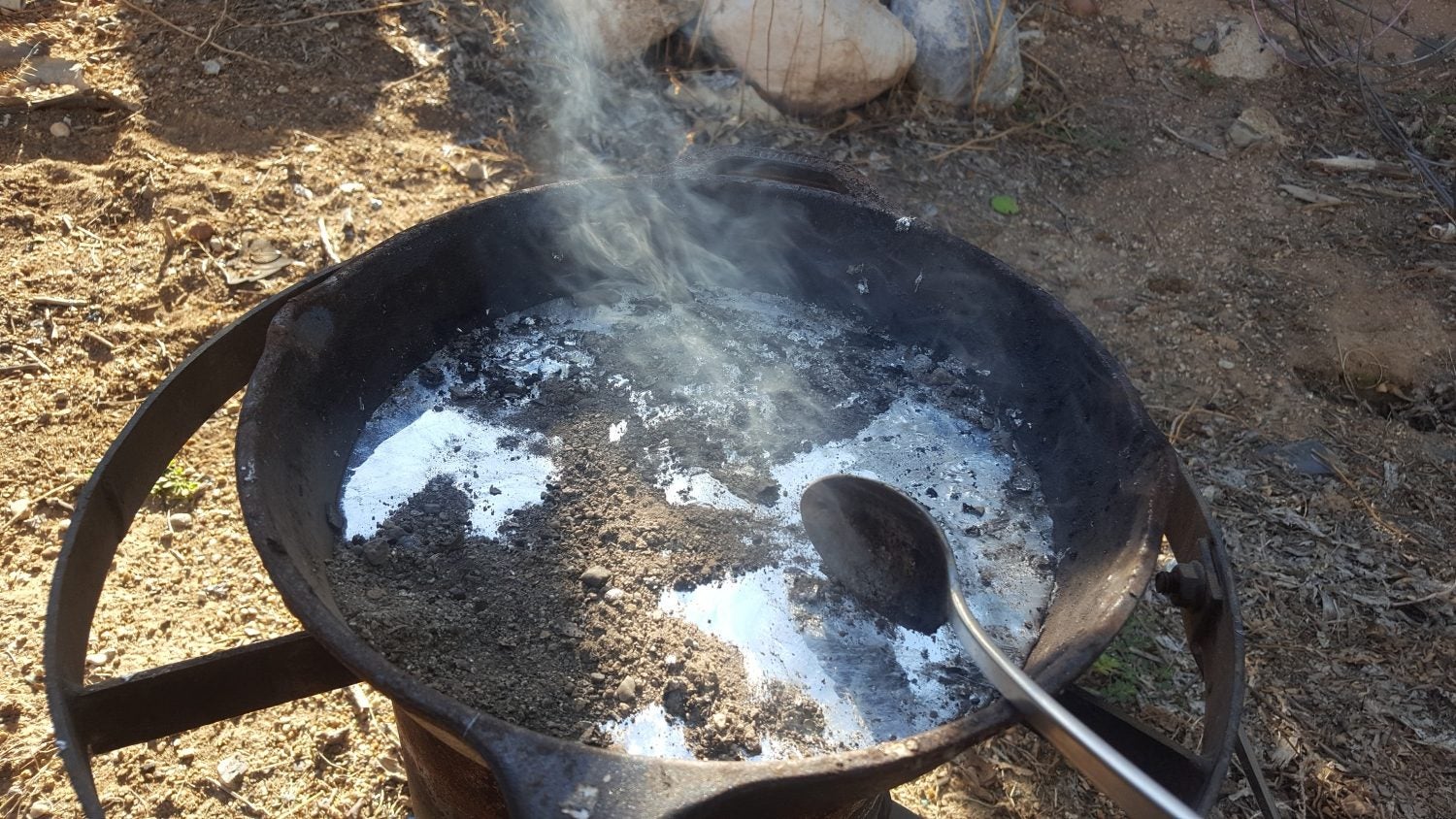
Finally, I skim with an old spoon. Corral all the dirt to one side and scoop in the metal can. (A quick reminder, ANYTHING you use for this must never be allowed back into food prep)

Here I add some sawdust. It burns to a carbon state and bonds to impurities. Skim and remove as before

I heat the mold with a propane torch, as the ladle heats in the lead
I skim the refuse and dump it in a metal can to cool before disposing of. Also, scrape the sides of the pan,crud sits there. Then we pour our ingots!

Pouring the first one pound ingot
Let the ingot cool until they have a dull finish, then dump them in a bucket of water. If they stick, you can just tap them with a wooden stick. They cool quickly in the water, in just a few minutes
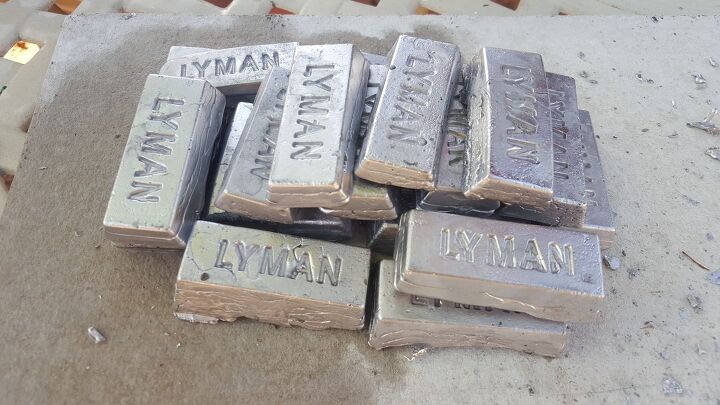
Not pretty, but good for a beginner
Okay readers, what do think? Am I getting this down? I always enjoy hearing from you guys. We have to have some of the sharpest most experienced on the net. Again, be nice to this casting noob.
 Your Privacy Choices
Your Privacy Choices
